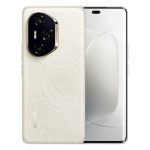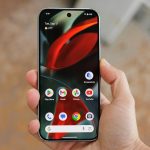
Makeup in the metaverse makes no sense to most people; beauty routines are deeply tangible experiences, and trying to virtually replicate either the process or results seems rather pointless. But what about metaverse makeup that becomes real, actual makeup?
That’s the type of metaverse beauty that virtual try-on services fall under. The tech is simple to understand: When shopping for certain products online, consumers will have access to “Virtual Try-On,” which uses your device’s camera to show what makeup products enabled for the feature will look like on your face. It’s metaversal in the fact that the service itself is entirely in virtual reality. But because virtual try-on’s purpose is to help you purchase actual makeup, you can use it to get your hands on the perfect shade of real makeup, eliminating the guesswork of online shopping and making it much more useful to the everyday beauty consumer.

Credit: Screenshot: Laura Mercier
At first glance, virtual try-ons seem technologically similar to beauty filters, as they both virtually overlay makeup on your face. The key difference is the actual design of makeup placed on each face and the nuances of color. With filters, designers have a lot more creative freedom; as a filter creator, you may just want to make a filter that gives the user red lips and eyeliner, and the shade of each makeup element is up to you. When someone uses that filter, they’re not likely to critique that the shade of red wasn’t exactly what they were looking for. With virtual try-on, each makeup product must correspond with the exact color of a real life product. If the shades don’t match up, a user might think that the virtual shade of lipstick looks great, but be very disappointed when their order arrives and doesn’t appear the same.
Depending on the product, virtual try-on also faces its own set of potential issues. Users can virtually try-on makeup in all kinds of real-life settings under various lighting. This could potentially change the way makeup shows up in the virtual image and create a false expectation for its real-life counterpart, making it essential that virtual try-on creators account for lighting differences when inputting the makeup’s virtual representation. In addition, makeup products often look very different depending on its wearer’s skin tone in real life. To ensure that virtual try-on also reflects this diversity, the service must accurately scan its wearer’s skin tone before overlaying the correct application of the product, rather than flatly placing the same shade of product on every face that uses it.
To test whether the virtual try-on services currently available can overcome these obstacles, we tried out three makeup products from three different retailers in the metaverse before purchasing their physical counterparts to compare the results. In this episode of Beauty, Hacked, Jennimai puts a foundation, blush, and lipstick from Estée Lauder, NARS, and Laura Mercier to the test to determine whether beauty in the metaverse can actually change the way we interact with our IRL beauty routines.
Powered by WPeMatico






